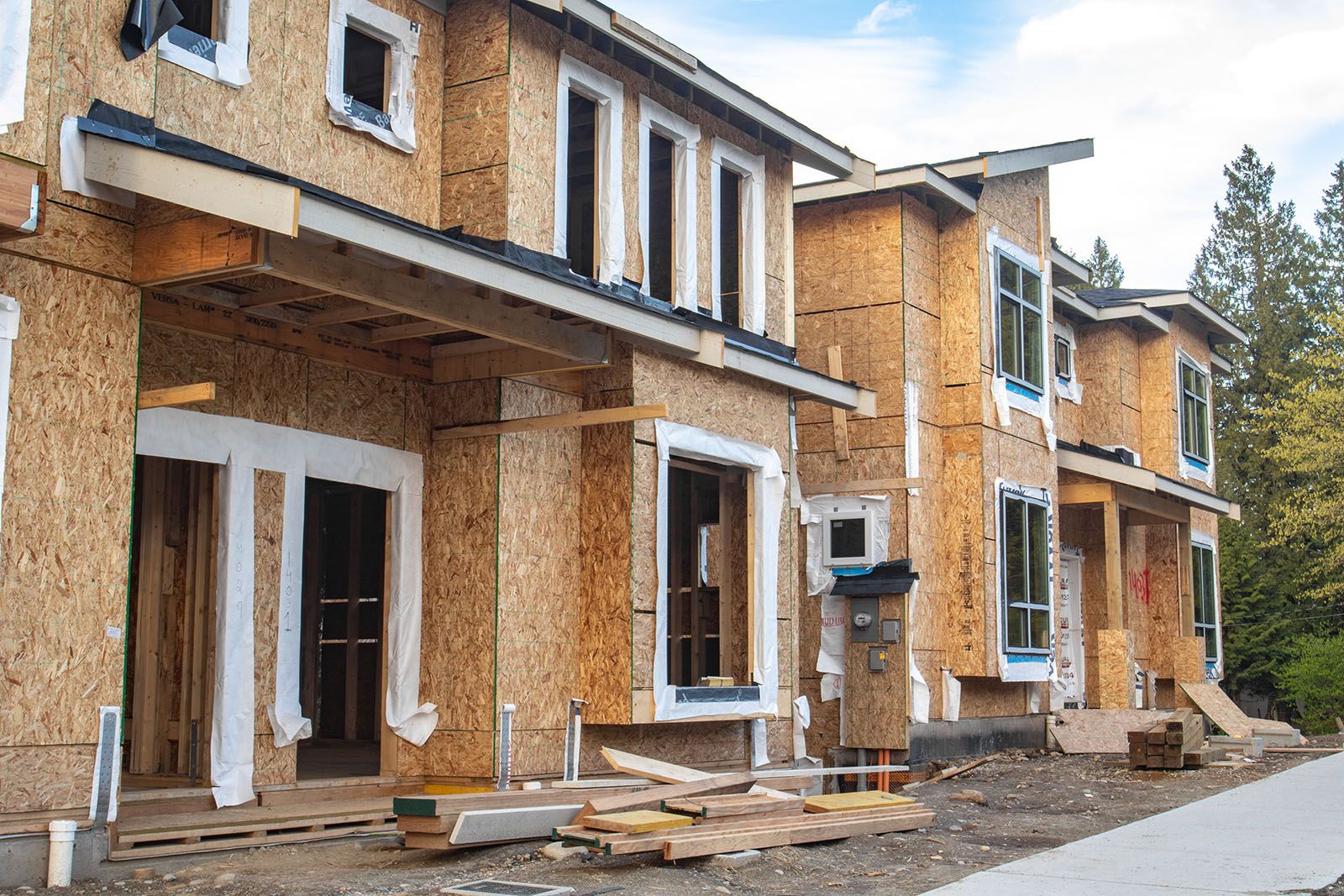Capital
The 12 Critical Reasons Builders Need To Regain Lost Cycle Time
Operational focus on high-velocity build cycles is essential as a homebuilder’s solution to navigate volatile, uncertain, and a higher-for-longer financing costs regime, not to mention ongoing challenges to keep expenses from getting out of control.

In the past six months, big homebuilders report that they've recaptured from 30-to-45 days build-time from what had been lost to 2020-21 pandemic supply-chain and labor chokeholds. Normal build cycles, historically ranging four-to-five months, now see builders finally achieving start-to-completion cycles in the 120-to-150 day range. Faster build times mean savings on land carry costs like interest-payments, insurance, and other fees that add up over time. Faster inventory turns are essential for builders to recapture those costs and bring down direct expenses in construction as a way to keep their house prices competitive.
Builders can allocate their resources more efficiently when they have greater control over construction timelines. This includes labor, equipment, and subcontractor scheduling. Efficient resource allocation helps minimize idle time and reduce costs.
Core competencies – trusted relationships with building trades and finance sources, exceptional product design leading to both simpler and more affordable product sets, a nimble asset-light balance sheet, high velocity, right-the-first-time construction cycles, and high-touch customer focus – become a smaller private firm’s super power and growth engine in a time of intensifying market share wars.
Builders of every size, irrespective of geographical location and product type, are focused on improving build-cycle times and operating more efficiently," says Brad David, Executive VP of development and construction at Snap.Build, a partner of The Builder's Daily. "The fundamental function of our platform has been built around our ability to help our builder clients address core competencies. Through the implementation of best in class technology we are able to identify and improve these functions for our builders."
Here are a dozen reasons operational focus on high-velocity build cycles is essential as a homebuilder’s solution to navigate volatile, uncertain, and a higher-for-longer financing costs regime, not to mention ongoing challenges to keep expenses from getting out of control.

(1) Reduction in Carrying Costs:
Shorter construction cycles help in reducing land carry costs, including interest payments on loans, insurance, property taxes, and other fees associated with holding the land. This can significantly impact a builder's bottom line by lowering overall project expenses.
Our ability to disperse construction funding via our draw management platform allows our builders to build as fast and efficiently as possible," says Snap.Build's Brad David. "As a client of Snap.Build, their main focus is on operations in the field rather than on payables and back office overhead. The faster they build and recycle the capital, the greater the reduction in overall carrying costs."
(2) Increased Efficiency:
Faster build times indicate increased efficiency in the construction process, which can lead to cost savings. Builders can allocate their resources more effectively, streamline operations, and potentially reduce labor costs.
Our goal each day is to improve the efficiency that we execute on behalf of our builders," says David. "Fundamental in our approach is paying vendors, subs, and suppliers faster then anyone in the industry."
(3) Improved Cash Flow:
Quicker turnaround times mean that builders can complete and sell homes sooner, leading to improved cash flow. This allows them to reinvest in new projects more rapidly and expand their business.
(4) Competitive Pricing:
Faster construction times can help builders remain competitive – offering more affordable homes, for instance -- in the housing market. Being able to deliver homes more quickly can attract buyers who may be looking for shorter move-in timelines.
We view this issue from a few different vantage points," notes Snap.Build's Brad David. "As vendors, subs, and suppliers realize that Snap.Build is involved in funding a builder, the conversations typically turn from payables and aging concerns, towards increases in overall credit capacity. When those stakeholders know that they will be paid in full and on time, our builders are the beneficiaries of more favorable terms. Our builders can also pass these savings along via more competitive pricing. As we are seeing margin erosion across all of our markets, the ability to hold onto margin has never been more important."
(5) Adaptability:
Faster build times also allow builders to be more adaptable to changing market conditions. They can respond to shifts in demand more effectively and adjust their construction schedules accordingly.
(6) Interest Cost Mitigation:
Higher interest rates can significantly increase the cost of borrowing for construction projects. Shortening build-cycle times allows builders to reduce the duration for which they need to carry construction loans, thereby minimizing interest expenses. This can help maintain profitability in a rising interest rate environment.
(7) Inflation Hedge:
Stubborn inflation can lead to rising construction costs, including materials and labor. Faster build times can help mitigate the impact of inflation by completing projects before costs escalate further, helping to lock in costs at lower levels.
(8) Reduced Exposure to Economic Uncertainty:
Faster construction cycles reduce the time a builder's capital is tied up in a project. This reduces exposure to economic uncertainty and market fluctuations. Builders can complete projects more quickly and move on to the next one, spreading risk across multiple projects.
(9) Improved Cash Flow Management:
In an environment where cost control is critical, faster build times lead to quicker revenue generation. Builders can generate cash from sales more rapidly, allowing them to meet their financial obligations and invest in new projects without facing liquidity challenges.
(10) Competitive Advantage:
Private construction companies that can consistently deliver projects on time and within budget gain a competitive advantage. This can attract more investors and clients, further enhancing their ability to secure financing and undertake new projects.
(11) Risk Management:
Shorter build cycles reduce exposure to unforeseen risks that may arise during construction, including damages to building materials and structures that occur before homes progress to “weather tight” condition. It's easier to manage risks and respond to unexpected challenges when projects are completed more quickly.
(12) Improved Sales and Closings:
Faster construction cycles allow builders to complete and sell homes more quickly. This can lead to a smoother alignment of expenses with incoming revenue from sales and closings. It also means homebuyers can move into their new homes sooner, improving customer satisfaction.
Improving build-cycle times is a critical strategy for privately financed home construction companies in a higher interest rate and inflationary environment. It helps manage costs, mitigate risks, and maintain competitiveness, all of which are vital for the long-term success of construction businesses. Builders should continue to explore ways to enhance efficiency and optimize their construction processes to adapt to changing economic conditions. However, it's essential for builders to continue monitoring supply chain conditions and make strategic decisions to maintain these improvements in the face of changing market dynamics.
These are just a few of the ways that Snap.Build is much more than a lender," notes Brad David. "We know that to grow and succeed, we have to offer a value proposition that is tangible for our builders. Each day we strive to be a true 'builder’s lender.' We understand their pain points and the myriad of challenges they face each day just to get houses built on time and under budget. The more solutions we provide to our builders the more valuable a partner we become."
Snap.Build provides builders with funding for residential construction projects. Snap.Build offers a non-recourse loan structure, competitive rates, and efficient loan closing.
MORE IN Capital
Land, Capital, And Control — A New Playbook In Homebuilding
Five Point Holdings’ acquisition of a controlling stake in Hearthstone points to the direction of homebuilding strategy: toward lighter land positions, more agile capital flows, and a far more disciplined focus on vertical construction, consumer targeting, and time-to-market velocity.
Engineering The Path To Better, Faster Growth Amid 2025's Stall
Local resistance, rising fees, and long entitlement windows are locking up growth. This analysis shows how smart financial planning unlocks new possibilities.
Lennar’s Q2 Results Redefine Homebuilding Power Play
As housing demand softens and builder confidence fades, Lennar’s asset-light strategy, pricing flexibility, and volume-first execution offer a roadmap—and a warning—for the rest of the industry.


